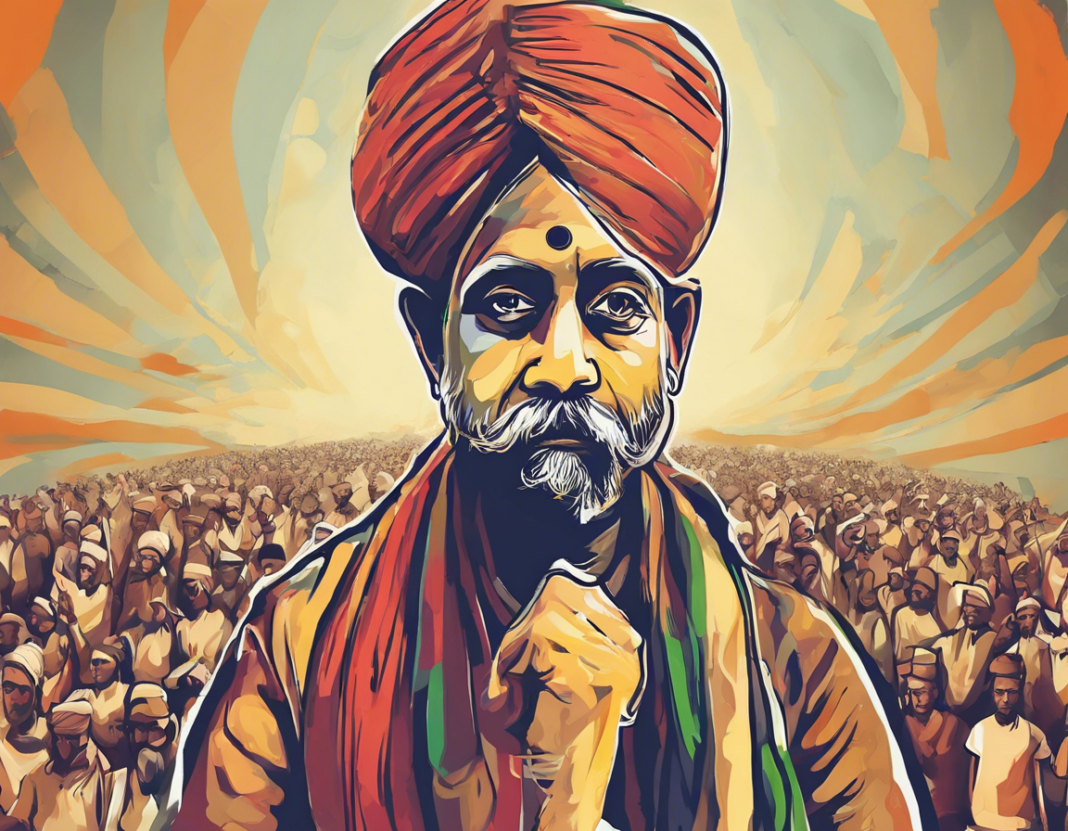India’s struggle for independence from British colonial rule was marked by numerous movements and uprisings that galvanized the entire nation. One such pivotal event in the Indian freedom struggle was the Bharat Chhodo Andolan, also known as the Quit India Movement. Launched on August 8, 1942, by Mahatma Gandhi, this movement aimed at ousting the British from India and attaining complete independence.
The Context Leading to Bharat Chhodo Andolan
The early 1940s witnessed a critical juncture in India’s fight for freedom. The failure of the Cripps Mission in 1942, which offered Dominion status to India post-World War II, without addressing the demand for complete independence, acted as a catalyst for the Bharat Chhodo Andolan. The Indian National Congress, under the leadership of Mahatma Gandhi, decided to launch a mass movement against British rule.
Objectives of the Movement
The primary goal of the Quit India Movement was to force the British to leave India. The leaders of the movement sought to assert India’s independence and reject any form of colonial rule or interference.
Salient Features of Bharat Chhodo Andolan
- Call for Non-Cooperation: The movement urged Indians to refuse cooperation with British authorities at all levels.
- Civil Disobedience: People were encouraged to engage in acts of civil disobedience, such as boycotting government functions and refusing to pay taxes.
- Arrest of Leaders: The British swiftly arrested key leaders of the movement, including Mahatma Gandhi, Jawaharlal Nehru, and Sardar Patel, in an attempt to quell the uprising.
- Underground Movement: Despite the arrests, the movement continued to operate underground, with a focus on disrupting British administration.
Impact of the Quit India Movement
The Bharat Chhodo Andolan had far-reaching consequences on India’s struggle for independence:
– International Attention: The movement garnered international support and sympathy for the Indian cause, pressurizing the British government.
– Unity among Indians: The call for unity resonated across different sections of Indian society, fostering a sense of solidarity.
– Inspiring Future Movements: The spirit of the Quit India Movement inspired generations of Indians to continue the fight for freedom.
Legacy of Bharat Chhodo Andolan
The Quit India Movement left a lasting legacy in the annals of Indian history:
– Symbol of Resistance: It stands as a symbol of resilience and determination in the face of oppression.
– Independence Achieved: The movement played a crucial role in accelerating India’s independence, which was achieved on August 15, 1947.
– Reminder of Sacrifices: The sacrifices made by the freedom fighters during the movement are commemorated to this day, honoring their contribution to India’s freedom.
Frequently Asked Questions (FAQs)
-
What was the significance of the Bharat Chhodo Andolan in India’s freedom struggle?
The Quit India Movement marked a significant milestone in India’s fight for independence, symbolizing the nation’s collective resolve to oust British colonial rule. -
How did the Quit India Movement impact the British administration in India?
The movement posed a formidable challenge to British authority in India, leading to widespread civil disobedience and creating hurdles in the administration’s functioning. -
Why did Mahatma Gandhi launch the Quit India Movement in 1942?
Mahatma Gandhi initiated the movement to demand complete independence from British rule, as the Cripps Mission’s proposals fell short of Indian aspirations. -
What strategies were employed during the Bharat Chhodo Andolan?
The movement resorted to non-cooperation, civil disobedience, and underground activities to disrupt British control and assert India’s independence. -
How did the international community react to the Quit India Movement?
The movement garnered support and sympathy from the international community, shedding light on India’s struggle for freedom and pressuring the British government.
In conclusion, the Bharat Chhodo Andolan holds a revered place in India’s historical narrative, serving as a testament to the indomitable spirit and unwavering commitment of the Indian populace towards achieving independence. The sacrifices made and the unity displayed during this movement continue to inspire generations, underscoring the enduring legacy of India’s struggle for freedom.
